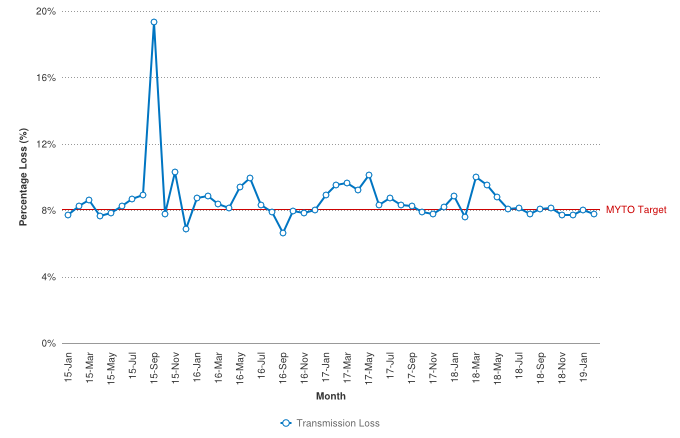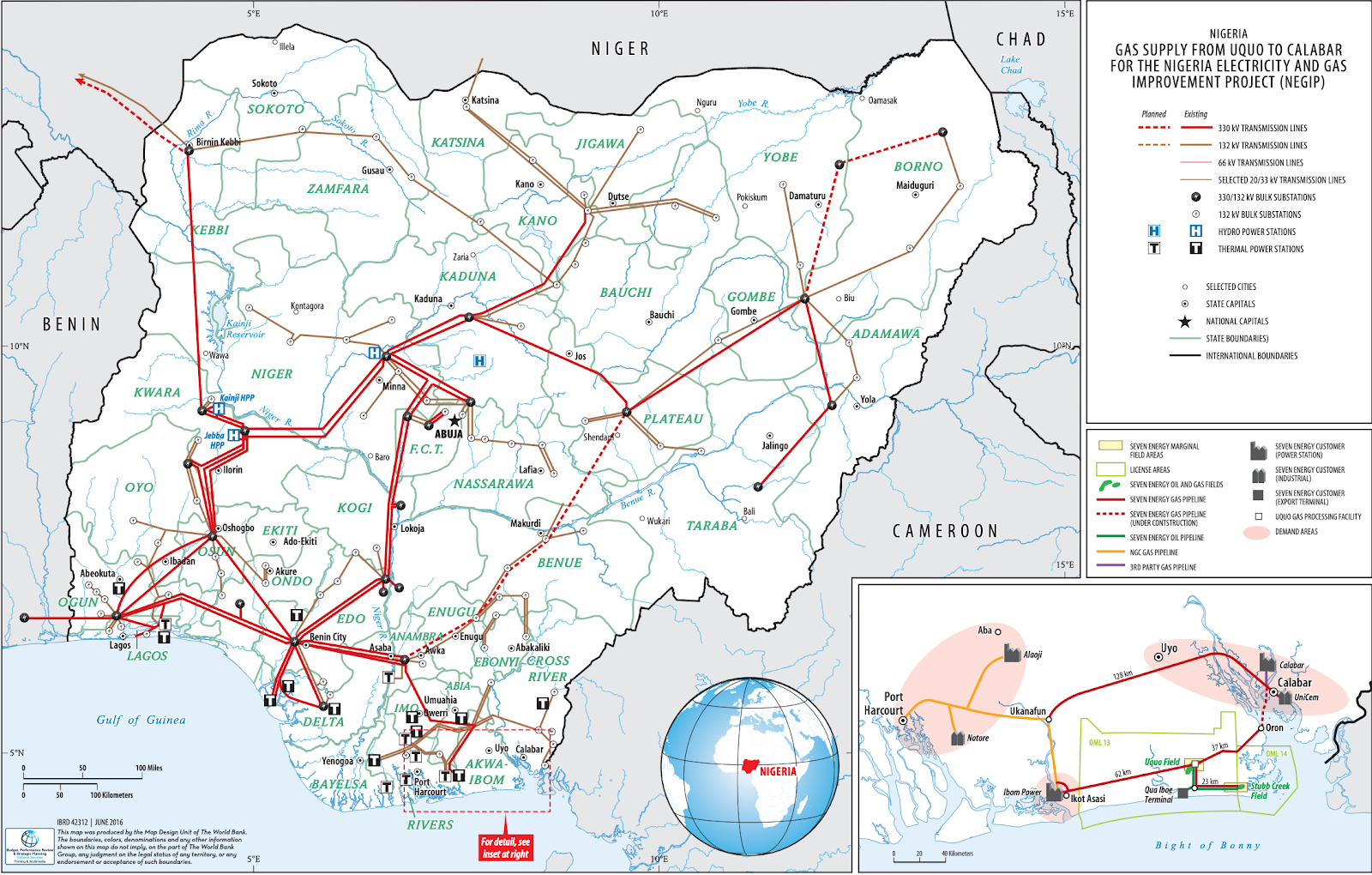Written in collaboration with Nextier Advisory
Context: Nigeria’s transmission network has long been a weak link in the country’s electricity value chain. Despite recent improvements, the Transmission Company of Nigeria (TCN) has never dispatched more than 5.4GW of power to a country of 200 million inhabitants.1 The national grid frequently suffers from system collapses and regularly fails to transmit available generation (a peak of 7.6 GW).2 In 2017-18, about 28 system collapses occurred due to faults and load disturbances leading to partial or total blackouts nationwide.3 The government aims to reach transmission capacity of 20GW by 2021 and has raised over $1.6 billion from donors for this effort.4 To achieve this target, the TCN should:
- Procure more reserves for generating power stations with functional automatic generation controls to manage frequency variations and reduce system collapse. The TCN needs an average of 400MW of spinning reserves, but currently has none.5 In the meantime, the Nigerian Electricity Regulatory Commission (NERC) must approve the 260MW of spinning reserves recently procured by TCN.
- Expand transmission lines and construct more substations to extend reach and improve the reliability of power. Construct additional relief lines to critical 330kV lines, such as the Alaoji-Onitsha line to correct current disturbances within its coverage.
- Refurbish sky wires and transmission equipment. Replace vandalised sky wires that expose the lines to lightning strikes, and replace obsolete transmission equipment to minimize the incidence of equipment failures.
- Tidy-up distribution network lines by erecting poles and properly tensioning lines to free them from overgrown vegetation. Rainstorms and other inclement weather can damage vulnerable lines, causing sudden large-scale loss of distribution loads.
- Initiate protection schemes for critical transmission-distribution interfaces to minimize the tripping of crucial transmission lines and damages to substations from faults. Currently, protection failure contributes to over 60% of system shutdowns, as nearly half of the 738 interfaces are not protected at the injection substations nor monitored in real-time.6
- Fast-track construction of digital control centers. Once built, the Supervisory Control and Data Acquisition (SCADA), Electricity Management System (EMS) and telecommunication networks will enable the TCN to digitally monitor the grid in real time, trace and repair system collapse faults, and minimize “blame game” in the industry.
Conclusion: Nigeria’s power supply reliability largely depends on the ability of the TCN to expand the transmission network and absorb more generated power. While significant funds have been raised to hit transmission expansion targets, the TCN must carefully consider its investment options, select vital upgrades, and closely monitor expenses.
FIGURE 1: Transmission Loss Factor (%)7

FIGURE 2: Map of Nigeria’s Major Transmission Lines8

FIGURE 3: Examples of Transmission Lines and Associated Problems9
| LINE | FAULTS | CAUSES | EFFECTS ON NETWORK |
|---|---|---|---|
| Ikorodu-Ayede-Oshogbo 132KV | Frequent conductor cut along entire length | Circuit was constructed in 1964 and is aging | Frequent and prolonged outages on circuit |
| Akangb-Ojo 132KV | Frequent electrical earth faults | Overloaded live conductor; heavy industrial pollution |
Frequent forced outages on circuits |
| Benin-Onitsha-Alaoji 330kV | Frequent tripping of line | Overloads on limited capacity lines | Frequent shutdown of Afam Power station. 11 state capitals experience blackouts when this occurs |
| Aba-Itu 132kV | Frequent tripping of line | Breakdown of only 1 circuit breaker on the line with no provision for by-pass facilities and is limited by single line contingency | Prolonged blackout of Itu, Eket and Calabar complex serving the majority of Cross River and Akwa Ibom states |
Endnotes
- Nigerian Electricity Systems Operator (2019), TCN Announces New National Peak Of 5,375MW.
- TCN (2019), Transmission Expansion Plans
- NERC Quarterly Report 2017-2019
- Energy Mix Report (2019), TCN gets $1.6bn from multilateral donors to boost Nigeria’s power supply
- TCN gives reasons for frequent grid collapse despite $1.6b investments
- TCN (2019), TCN Newsletter -March 2019.
- NERC 2019
- Map design unit of the World Bank (2016)
- Oladipo F. and Temitayo, o. (2014), The Nigerian Power System Till Date: A Review. International Journal of Advance Foundation and Research in Science & Engineering (IJAFRSE), Vol. 1 (5).
